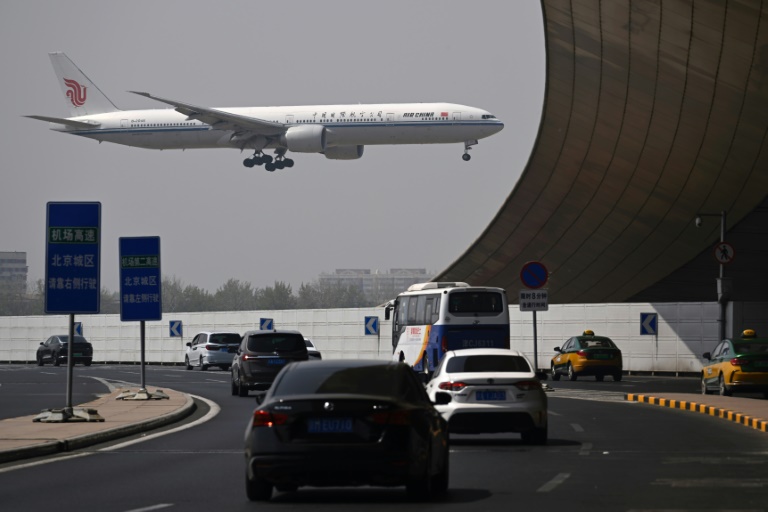KUALA LUMPUR: Airlines are gearing up for another turbulent year as continuous aircraft delivery delays, supply chain constraints, and rising operational costs threaten to stifle growth despite hopeful forecasts for 2025 by major industry bodies.The International Air Transport Association (IATA) projects global airline revenues to hit a record-breaking US$1 trillion (RM4.75 trillion) this year, with net profits expected to reach US$36.
6 billion (RM174 billion) driven by strong air travel demand and route expansion.The Association of Asia Pacific Airlines (AAPA) similarly expects continued recovery across Asia Pacific as airlines continue to benefit from sustained air travel demand and growth in air shipments.However, both IATA and AAPA cautioned that 2025 would be challenging for airlines as the reality on the ground paints a more complex picture.

Alton Aviation Consultancy managing director for Singapore Mabel Kwan said airlines are struggling to grow simply because they do not have new aircraft."New aircraft deliveries are being delayed numerous times, and the backlogs are stretching into the next decade," she told Business Times in an interview recently.Kwan described the delays as part of a systemic, industry-wide issue with wide-body aircraft facing delivery timelines of up to seven to eight years, and narrow-body jets taking close to a decade.
"It is unlikely that airlines will be able to fulfil their long-term plans based on these backlogs. Many had drawn up post-Covid recovery strategies, but those are now being undermined by the supply chain and production issues," she said.Airlines are postponing the retirement of older aircraft in order to mitigate their new aircraft delivery delays, leading to a rise in average fleet age, as well as higher maintenance costs.
"The maintenance, repair and overhaul (MRO) facilities are under pressure. Their capacity is already stretched, and that is being compounded by labour shortages. It's all contributing to escalating costs for airlines," Kwan said.
She added that airlines are also facing the soaring cost of aircraft leases, as lessors, who are also caught in the delivery bottlenecks, pass on higher renewal prices to operators.Instead of signing new leases, airlines typically extend existing contracts at elevated rates."If you put all these factors together, the environment becomes extremely challenging for profitability, even if revenue and demand continue to grow," Kwan said.
She also said that while passenger traffic has largely rebounded, airlines are facing softening yields, especially as capacity returns to key routes."Take Singapore-China for example, there was only one flight per day (during the pandemic) and the ticket was going for S$6,000-S$8,000, but now the price has been coming down to a more normalised level because there is additional capacity with the Chinese airlines coming back to Singapore," she said.Kwan also said that the post-pandemic pent-up demand is tapering, giving way to longer-term macroeconomic realities, including inflation, trade tensions, and concerns over China's economic outlook.
However, the headwinds and the supply chain woes facing the two biggest aircraft manufacturers - Airbus and Boeing - are presenting a golden opportunity for Brazil's plane-maker, Embraer to expand globally, particularly in Southeast Asia."Embraer has been aggressive and forward-thinking. Their aircraft are perfect for Southeast Asia's thinner regional routes," Kwan said, adding that budget carrier, Scoot's launch of flights from Singapore to Malacca and Koh Samui as examples of right-sizing strategy in action.
Kwan said many regional airlines have restructured post-Covid and are now positioned to capitalise on underserved routes with the open skies policy in Southeast Asia.This, she said, is provided that the airlines have the right-sized aircraft."This is the right time for someone like Embraer to come in and see how they can shake up the market a little bit.
..The future looks good for them if they can successfully capitalise the current situation," Kwan said.
Speaking of COMAC, Kwan said the real challenge for the Chinese airplane manufacturer lies in international credibility and support infrastructure beyond China."For COMAC to break out internationally, it must build robust distribution and after-sales networks outside of China. Just as importantly, it needs to secure certification from the U.
S. (Federal Aviation Administration) and the EU (European Union Aviation Safety Agency)," she said.Kwan added that COMAC could follow a development model similar to China's electric vehicle sector by testing and scaling locally before going global.
Opportunities are abundant for COMAC in Southeast Asia given that the region is close enough to the Chinese supply chain for after-sales support.However, Kwan said geopolitical sentiments and international certification challenges remain significant hurdles for the China-made aircraft.Meanwhile, the challenges airlines face in 2025 reflect the deep interconnectedness of the aviation ecosystem - from manufacturers and MROs to ground handlers and leasing firms.
"Supply chain issues, labour shortages, and inflation are not problems that any one player can fix in isolation. We are starting to see more collaborative efforts between airlines, airports, and suppliers to tackle this holistically," Kwan said.© New Straits Times Press (M) Bhd.
Top

Airlines brace for another turbulent year amid delivery delays, rising costs

KUALA LUMPUR: Airlines are gearing up for another turbulent year as continuous aircraft delivery delays, supply chain constraints, and rising operational costs threaten to stifle growth despite hopeful forecasts for 2025 by major industry bodies.











